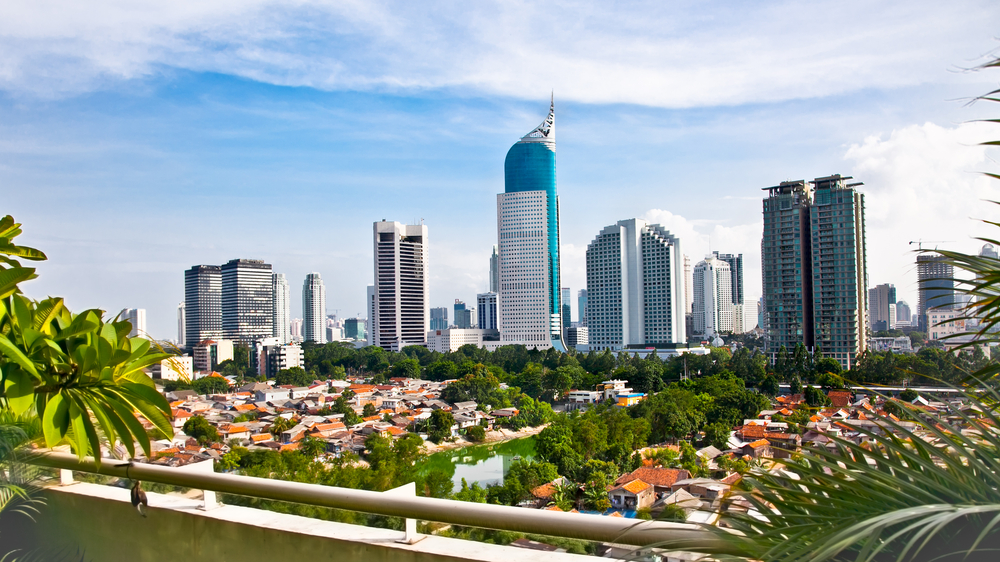Indonesia Strives to Reach its Economic Potential

Please note that we are not authorised to provide any investment advice. The content on this page is for information purposes only.
Indonesia has come a long way since former president Suharto adopted a new economic stabilisation policy in 1996. However, the country must take steps to improve infrastructure and enhance data measurement if it is to realise its economic potential.
Indonesia has come a long way since former president Suharto adopted a new economic stabilisation policy in 1996. However, the country must take steps to improve infrastructure and enhance data measurement if it is to realise its economic potential.
During the 1960s, in the early years of Suharto’s regime, Indonesia’s budget deficit was financed by only long-term concessionary loans from the International Governmental Group on Indonesia — the official development source. Suharto called this the ‘balanced budget rule’. The budget and debt rules replaced the inflationary financing policies of the previous president Sukarno. The policy change reduced inflation from over 650 percent in 1966 down to 10 percent in 1969. This in turn enabled the government to start implementing the First Five Year Development Plan on 1 April 1969.
President Suharto’s administration repressed the banking system by setting detailed ceilings on bank credit and forcing interest rates down — sometimes, below inflation rates. It allocated credit by prioritising economic sectors, certain classes of customers and individual credit recipients. Bank governance was bad with widespread corruption, collusion and nepotism. The central bank provided the liquidity credit to finance credit programs while the state-owned credit insurance company assumed credit risks.
Before the Asian Financial Crisis in 1997, Indonesia had a fixed exchange rate system. Bank Indonesia (BI) had full control of the domestic and foreign components of the monetary base. It controlled the former through lending to commercial banks and the latter through buying and selling units of foreign exchange at fixed prices in exchange for domestic money. To keep the monetary base unchanged, BI credited the surplus in foreign exchange as reserves. It also countered the devaluing effects of foreign exchange reserves on the monetary base through sterilising surpluses. It sold its own certificates and other securities to banks in order to absorb the increasing reserves.
Indonesia moved to a floating exchange rate system in 1997, meaning BI lost control of monetary authority on the foreign component of the monetary base. It shifted its goal to inflation targeting and began using the one-month bond certificate interest rate as the operating target of monetary policy. In 2000, Indonesia targeted soft inflation and since 2005 has adopted the Taylor-type rule — the central bank increases the nominal interest rate by more than one percentage point after a one percent increase in inflation. Inflation targeting gets support from the new fiscal and debt rules. The budget deficit is limited to 3 percent of GDP and the debt-to-GDP ratio must remain below 60 percent.
On 9 July 2008, BI changed the operational target from the one-month certificate interest rate to the overnight interbank interest rate.
In general, central banks set a neutral real interest rate if monetary policy is neither expansionary nor contractionary. The neutral or equilibrium interest rate depicts stable inflation and a zero output gap (with the economy running at full potential) over the medium term. The central bank sets the real interest rate above the neutral rate to dampen economic growth. The difference between actual policy rate and the neutral real interest rate is the interest rate gap, which evaluates the monetary policy stance needed to close the output gap.
However, it is not clear whether BI’s estimated long run equilibrium natural interest rate in Indonesia should be similar to that of the US. Like the US, the coefficient for the inflation gap is nearly two and the output gap is 0.25. The dynamic stochastic general equilibrium model is the basis for the potential output estimate, which links real growth with changes in employment, financial markets, capital stocks, CPI inflation and capacity utilisation. These data are limited or unavailable in Indonesia.
The results are further complicated by fragmented input and products markets. A combination of geography, weak and high-cost interregional transportation, and distorted government policies cause this fragmentation. Moreover, this means Indonesia is yet to exploit its large geography and population. It is still a dual economy with a substantial low-productivity informal sector. In a small open economy like Indonesia, the exchange rate affects both the interest rate and core inflation and CPI through the pass through effect. Addressing these issues must occur before Indonesia can properly close the output gap.
Indonesia’s long road to economic stability is republished with permission from East Asia Forum




